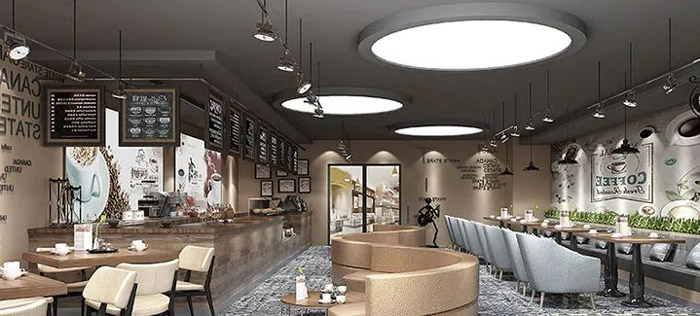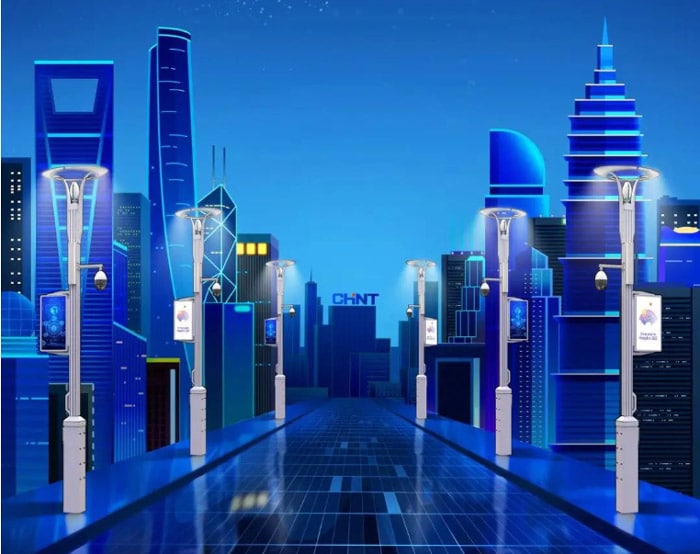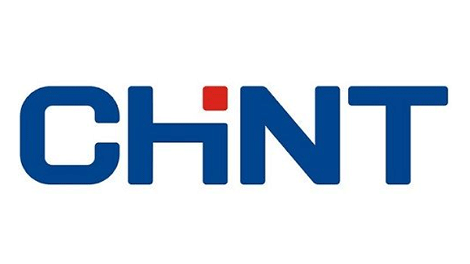CHINT – CHINT’s NB2: Revolutionizing Energy Control for a Green Future
With the rising global awareness for environmental protection, an increasing number of businesses are shifting their focus towards green, low-carbon development.
Energy conservation and consumption reduction have become pivotal directions for corporate growth. In this transition, the application of smart MCBs has emerged as a vital tool for businesses to achieve these goals.
CHINT, as a global provider of intelligent energy solutions across the entire industrial chain, offers its NB2 series of smart MCBs. These breakers enable precise and controllable electricity usage.
They effectively prevent overload and short-circuit incidents, offer remote control and management of electrical equipment, and promote intelligent management of these devices. All these contribute significantly to businesses’ green and low-carbon development and help reduce energy consumption.
Aligned with the trend of intelligent distribution, CHINT’s NB2 series of smart MCBs are designed based on real user needs, equipped with built-in modules for power, leakage protection, and communication. They can measure various parameters like current, voltage, power, and energy.
Additionally, they can be controlled remotely via a PC or mobile app, allowing users to monitor and control the power distribution status of an entire building from afar. The NB2 series boasts three primary advantages: safety, intelligence, and easy setup. They address the power-related pain points in various scenarios like supermarkets, smart streetlights, residential PV, commercial buildings, and so on.
For supermarkets and stores
Common issues: Normally, supermarkets and stores only address electrical issues after a fault has occurred, which makes the circuit safety risks can not be found in time. Chain stores are scattered, making maintenance time-consuming and inconvenient. Lights remain on after the store closes, wasting electricity.
NB2 Solutions: Monitor electric parameters like current and voltage in real-time to detect issues early. If a fault occurs, NB2 automatically sends an alarm signal to the control platform, which is faster than manual reporting.
Remote control of lights, LEDs and signboard light boxes is possible with the NB2 solution, making management more convenient and reducing power waste. A large fast food chain with 1000 stores has completed LOT intelligent transformation.

For Smart Streetlights
Common issues: Numerous streetlights are spread out, making it difficult to detect faults promptly. There’s also the problem of electricity theft.
NB2 Solutions: We can remotely turn smart streetlights on and off via NB2, for instance, re-closing after a leakage trip. Shorten maintenance time through fault location and alarm, thereby reducing traffic hazards caused by poor lighting.
Also, we can detect whether there is electricity theft using the power metering function, and allow for remote disconnection to prevent such actions. On the Yueqing Electric City Avenue, two rows of CHINT street lights create a sense of future for the street.

For Residential PV and Commercial Buildings
Common issues: Electrical problems are usually addressed only after they occur, making prevention challenging. Unattended areas where lights or air conditioning are left on, lead to wastage. Commercial EV charging stations need billing.
NB2 Solutions: Monitor parameters like current and voltage to detect electrical issues promptly. Remote control of NB2 MCBs reduces energy consumption. The solution enables data acquisition for solar energy generation and energy storage, and energy metering for EV charging stations.
Coupled with intelligent systems, it allows for energy efficiency analysis, which allows us to make more appropriate electricity usage plans. In China, this solution has been successfully applied to multiple office buildings, villas, and other scenarios.

For Campuses and Public Rental Housing
Common issues: Electrical faults are challenging to predict, posing dangers in densely populated areas. Dangerous high-power appliances are difficult to control.
NB2 Solutions: Offer various protective features against issues like overload, short-circuit, under-voltage,over-voltage, frequency discrepancies, and phase loss. NB2 can automatically detect whether the leakage protection function is normal at regular intervals.
Via energy metering function, we can find out whether the dormitory is using potentially dangerous high-power appliances, and detects any unusual electricity consumption patterns.

Today, CHINT’s NB2 series of smart MCBs are extensively used in scenarios that require electricity control and energy metering. In the future, CHINT will continue to delve deeper into the field of intelligent power distribution, bringing global users solutions that are even more tailored to their specific needs.
SourceCHINT Global
EMR Analysis
More information on CHINT: See the full profile on EMR Executive Services
More information on Nan Cunhui (Chairman, CHINT Group): See the full profile on EMR Executive Services
More information on Lily Zhang (Executive President, CHINT Electrics and President, CHINT Global): See the full profile on EMR Executive Services
EMR Additional Notes:
- Switchgears:
- Broad term that describes a wide variety of switching devices that all fulfill a common need: controlling, protecting, and isolating power systems. This definition can be extended to include devices to regulate and meter a power system, circuit breakers, and similar technology.
- Switchgear contains fuses, switches, and other power conductors. However, circuit breakers are the most common component found in switchgear.
- Performs the function of controlling and metering the flow of electrical power in addiction to acting as interrupting and switching devices that protects the equipment from damage arising out of electrical fluctuations.
- There are three types of switch gears namely LV (Low voltage), MV (Medium voltage) and HV (High voltage) Switchgear.
- Circuit Breakers:
- Mechanical electrical switch designed to protect an electrical circuit from damage caused by overcurrent/overload or short circuit. Its basic function is to interrupt current flow after protective relays detect a fault.
- By definition a circuit breaker is an electrical safety device, a switch that automatically interrupts the current of an overloaded electric circuit, ground faults, or short circuits.
- Fuses:
- Single time mechanical circuit interruption in an over-current situation through fusion of a graded electrical conductor. Employed in 30KV to 100KV range.
- Electrical safety device that operates to provide overcurrent protection of an electrical circuit. Its essential component is a metal wire or strip that melts when too much current flows through it, thereby stopping or interrupting the current.
- ACB (Air Circuit Breakers):
- Uses air as insulating medium.
- Air circuit breaker is a circuit breaker for the purpose of protecting low voltage circuit, mainly for energizing and cutting off high current
- VCB (Vacuum Circuit Breakers):
- Vacuum is used as the means to protect circuit breakers.
- Circuit breaker where the arc quenching takes place in a vacuum medium. The operation of switching on and closing of current carrying contacts and interrelated arc interruption takes place in a vacuum chamber in the breaker which is called a vacuum interrupter.
- AIS (Air Insulated Switchgears):
- Air is used for insulation in a metal-clad system
- Secondary power distribution device and medium voltage switchgear that helps redistribute the power of a primary power distributor powered by a high voltage distribution transformer. AIS controls, protects and isolates electrical equipment in power transmission and distribution systems.
- GIS (Gas Insulated Switchgears):
- All working components assembled under SF6 (Sulfur Hexafluoride HV Switchgears) gas-tight casing.
- Compact metal encapsulated switchgear consisting of high-voltage components such as circuit-breakers and disconnectors, which can be safely operated in confined spaces.
- OCB (Oil Circuit Breakers):
- Vapors a portion of oil to blast a jet of oil through the arc.
- Circuit breaker which uses insulating oil as an arc quenching medium
- Hybrid Circuit Breakers:
- Combines Air-insulated and SF6 Gas-insulated technologies.
- MCB (Miniature Circuit Breakers):
- Employed in domestic households to safeguard against overload. Rated current max. 100 A.
- Electrical switch that automatically switches off the electrical circuit during an abnormal condition of the network means an overload condition as well as a faulty condition. Nowadays we use an MCB in a low-voltage electrical network instead of a fuse.
- Circuit breakers have a tripping relay mechanism, while MCB has a tripping release mechanism. Circuit breakers have a high rupturing capacity, but the MCB has a low rupturing capacity. Circuit breakers are used in High Voltage systems, while MCBs are used in Low Voltage systems.
- RCCB (Residual Current Circuit Breakers):
- To safeguard against electrical shock arising out of indirect contact and includes the detection of residual current such as earth leakage.
- Current sensing device, which can automatically measure and disconnect the circuit whenever a fault occurs in the connected circuit or the current exceeds the rated sensitivity.
- MCCB (Molded Case Circuit Breakers):
- Incorporates insulating material in the form of molded casing within circuit breaker. Rated current up to 2,500 A.
- MCCB has a higher interrupting capacity, meaning it can handle larger loads than a conventional breaker. Generally, a standard breaker is used for residential and light commercial applications, while an MCCB is suitable for industrial and heavy commercial applications.
- Disconnectors:
- Automatic switching device that offers specific isolating distance on the basis of specific requirements.
- Disconnectors (also known as Isolators) are devices which are generally operated off-load to provide isolation of main plant items for maintenance, or to isolate faulted equipment from other live equipment.
- Contactors:
- Works alike high-current switching systems but at higher voltage rates. Contactors can however not be utilized as disconnecting switches. Contactors are employed in 30KV to 100KV range.
- Special type of relay used for switching an electrical circuit on or off.
- Electrical device that is widely used for switching circuits on and off. As such, electrical contactors form a subcategory of electromagnetic switches known as relays. A relay is an electrically operated switching device that uses an electromagnetic coil to open and close a set of contacts.
- PTCB eFuse Circuit Breaker:
- Electronic micro fuse for DIN rail protecting electronically nominal currents below 1A to facilitate the clear detection of faults and supports precise fault localization and fast recovery. Response times are shorter compared to conventional fuse protection and the exact current value can be adjusted at any time
- RCD (Residual Current Devices):
- Sensitive safety device that switches off the electricity within 10 to 50 milliseconds if there is an electrical fault. An RCD is is designed to protect against the risks of electrocution and fire caused by earth faults.
- The difference between a circuit breaker and an RCD switch is the purpose of a circuit breaker is to protect the electrical systems and wiring in a home while the purpose of an RCD switch is to protect people from electrocution.
- RCBO (Residual Current Breaker with Over-Current):
- RCDs can protect against electric shocks, residual currents, and earth faults. On the other hand, RCBOs can do what RCDs can do and protect a circuit from short circuits and overload. RCBOs are essentially a combination of MCB and RCCB.
- An RCBO protects electrical equipment from two types of faults; residual current and over current. Residual current, or Earth leakage as it can sometimes be referred to, is when there is a break in the circuit that could be caused by faulty electrical wiring or if the wire is accidentally cut.
- Carbon Dioxide (CO2):
- Primary greenhouse gas emitted through human activities. Carbon dioxide enters the atmosphere through burning fossil fuels (coal, natural gas, and oil), solid waste, trees and other biological materials, and also as a result of certain chemical reactions (e.g., manufacture of cement). Carbon dioxide is removed from the atmosphere (or “sequestered”) when it is absorbed by plants as part of the biological carbon cycle.
- Decarbonization:
- Reduction of carbon dioxide emissions through the use of low carbon power sources, achieving a lower output of greenhouse gasses into the atmosphere.
- LED:
- LED stands for light emitting diode. LED lighting products produce light up to 90% more efficiently than incandescent light bulbs. How do they work? An electrical current passes through a microchip, which illuminates the tiny light sources we call LEDs and the result is visible light.
- A light-emitting diode is a semiconductor light source that emits light when current flows through it. Electrons in the semiconductor recombine with electron holes, releasing energy in the form of photons.
- LED vs. Halogen:
- Halogen bulbs, while lasting longer than incandescent bulbs, only last up to 2,000 hours. In contrast, LED bulbs can last up to 25,000 hours, and LED tubes are rated for up to 50,000 hours. LED bulbs can use as much as 80% percent less energy than halogen bulbs.
- There’s obviously a clear winner when it comes to LED vs halogen lighting. LED lights are more energy-efficient, have a longer lifespan, and offer more choices in color temperature. They do cost a little more, but their extremely long lifespan easily offsets the higher upfront cost.
- microLED:
- Compared to widespread LCD technology, microLED displays offer better contrast, response times, and energy efficiency. They are also capable of high speed modulation, and have been proposed for chip-to-chip interconnect applications.
- MicroLED prototype displays have been shown to offer up to 10 times more brightness than the best OLED panel while being significantly more power efficient, making them an exciting new technology in the world of displays.
- OLED (Organic Light-Emitting Diode):
- This refers to the panel that’s used inside an OLED TV – or any other kind of OLED screen. So it’s the OLED panel makes OLED TVs stand out in comparison to other types of panels. You’ll also find CRT (cathode ray tube), LED (light-emitting diode), LCD (liquid crystal display), or QLED (quantum dot).
- LED LCD screens use a backlight to illuminate their pixels, while OLED’s pixels produce their own light. You might hear OLED’s pixels called ‘self-emissive’, while LCD tech is ‘transmissive’. The light of an OLED display can be controlled on a pixel-by-pixel basis.
- OLED TVs should offer better overall eye comfort than QLED and any other LCD-based screen, because OLED produces significantly less blue light than LED-backlit QLED TVs.


